The hidden lichens
This is the audio (below) for this halt. The text below is a transcription of the audio! The audios do not contain all the content written in the text to keep the audios engaging. If you want to have more details, check out the text. Enjoy!
Scavenger hunt for lichens
Can you find the most hidden lichens? They can be anywhere…. Where have you found them?
Have you seen the post indicating the street name “Leamington walk”? If you get closer, you will see peculiar organisms invading the sign…

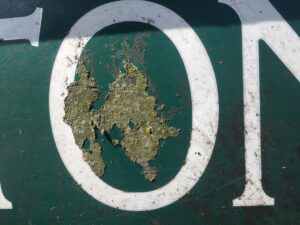
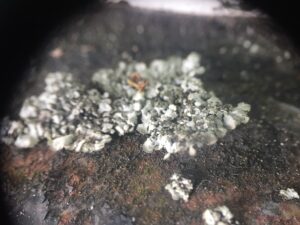
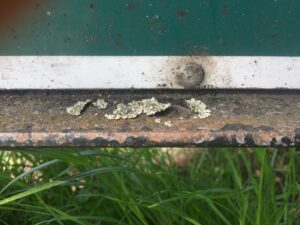
On Leamington Walk, you can find lichens on the light poste.

Can you see the beautiful Xanthoria parietina? This is a lichen we have already identify before.
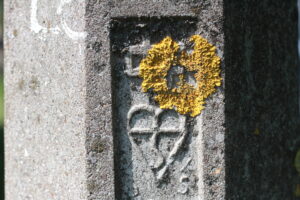
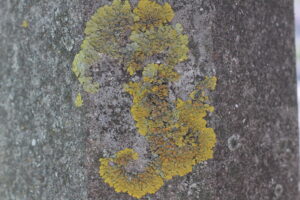
Credit: Xanthoria parietina on cement, photo taken by the author (2021). CC BY-SA 4.0.
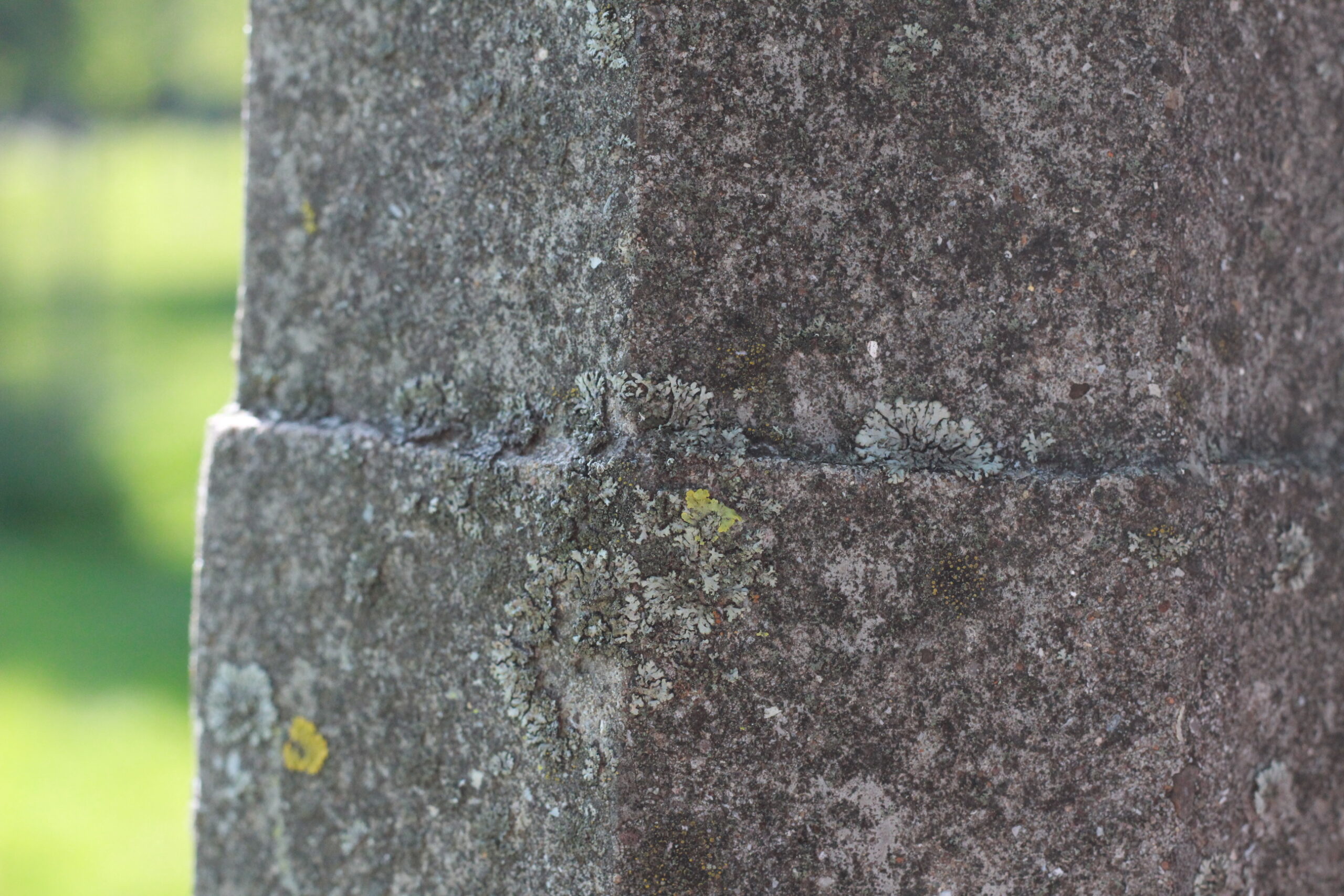
The presence of the lichens in these peculiar places gives you an idea of the ubiquity of these organisms.
Lichen can grow on different surfaces. For example, some lichens (Pristoderus chloreus) live on beetles that depend on it for camouflage. Lichens can also grow on soil (lichens of the genus Peltigera) or be vagrant (without attaching itself to any substrate such as Aspicilia fruticulosa found in deserts like the Namib or in the Artic). Lichens can live anywhere and closer to us that we think – on benches, branches, trunks, paving stones. The essential elements that are necessary for lichens are the quality of the air for certain species, the accessibility to water or humidity and light to photosynthesize. When the conditions are unfavourable to the lichens, they can go into a dormant state and function normally again when the conditions improve. When the conditions deteriorate, you will regularly see the highly fertile reproductive apparatuses of lichens (we will talk about those later on this walk). This is because the lichens are quickly dispersing before – potentially – dying.
Lastly, lichens even exist in our mouths. These lichens are called lichen planus. Their presence is due to the immune system that turns against itself by attacking its own cells. Researchers have also found lichens 400 km from the South Pole and they can therefore live in the Arctic and Antarctic.
Let’s continue our adventure… If you walk towards the next halt (Westhall Gardens, you can check the way here), you’ll find more lichens in unexpected places.
On Leamington Terrace, in front of the church, you will find some lichens on the stone wall.
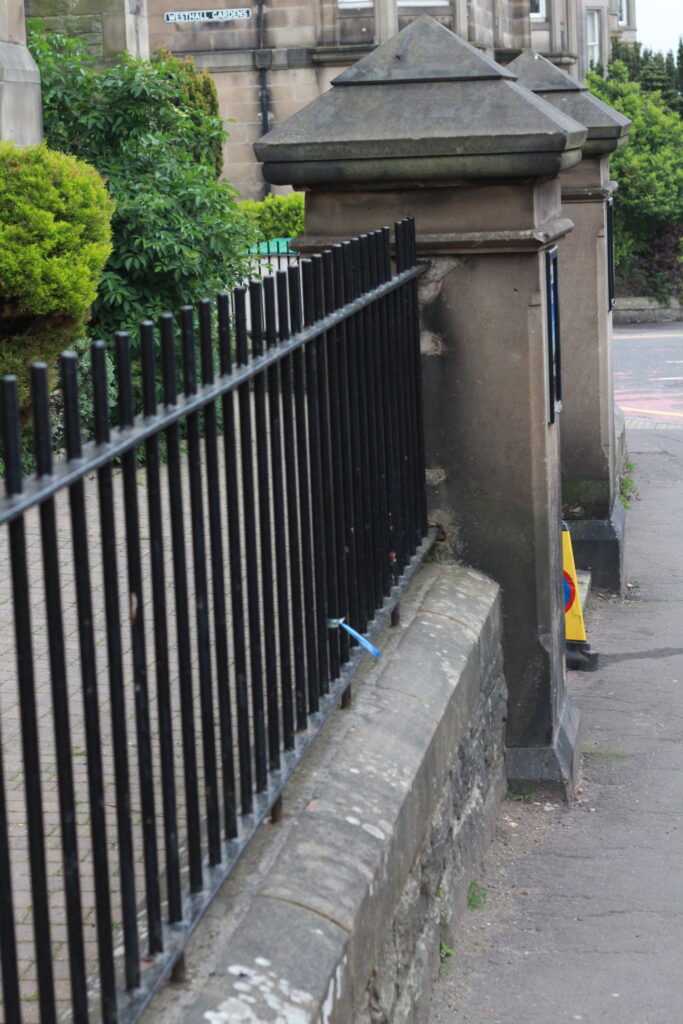
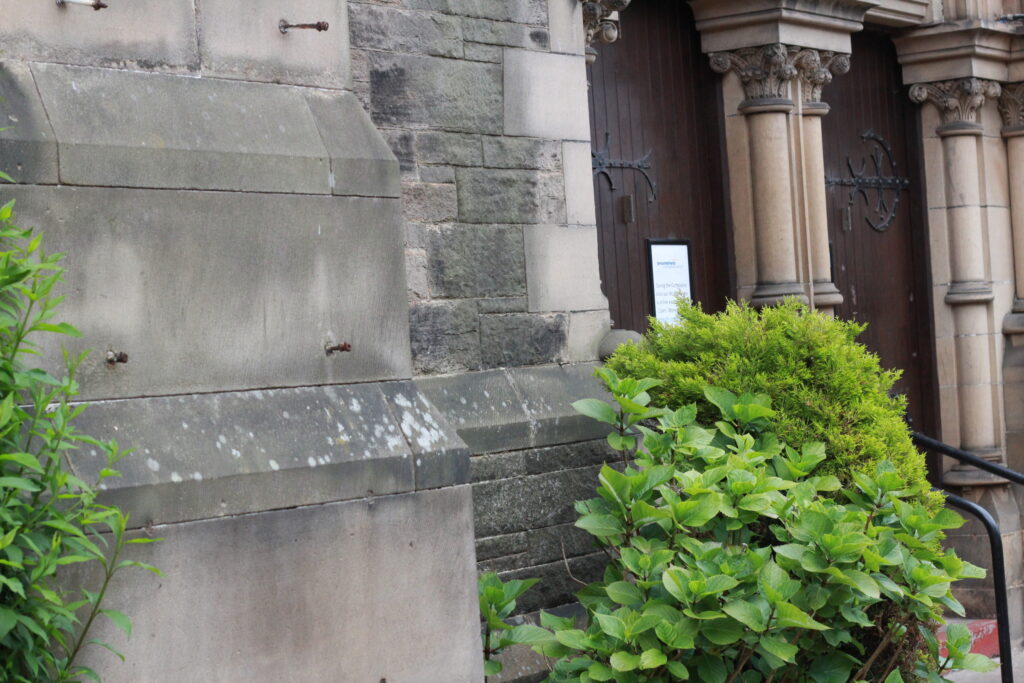
Credit: Street view on the church stone wall and the lichens on it, picture taken by the author (2021). CC BY-SA 4.0.
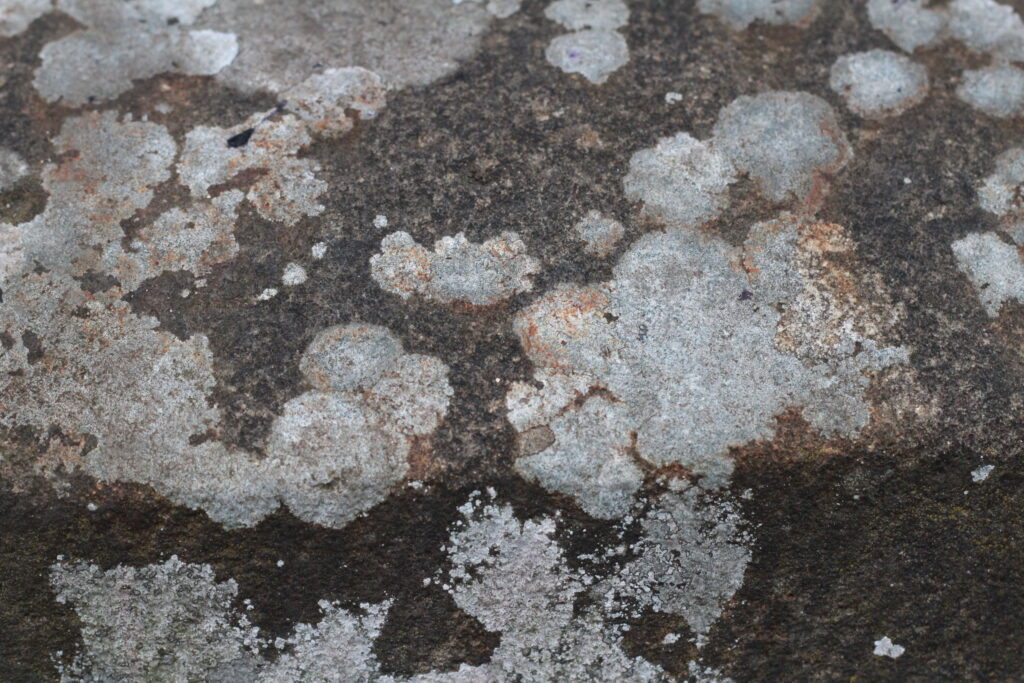
Feedback
If you don’t continue the ride, can you give us feedback on your experience here ? It will help us improve!
In our next step we will meet at the Westhall Gardens! Keep your eyes open, you never know where the lichens could be.


